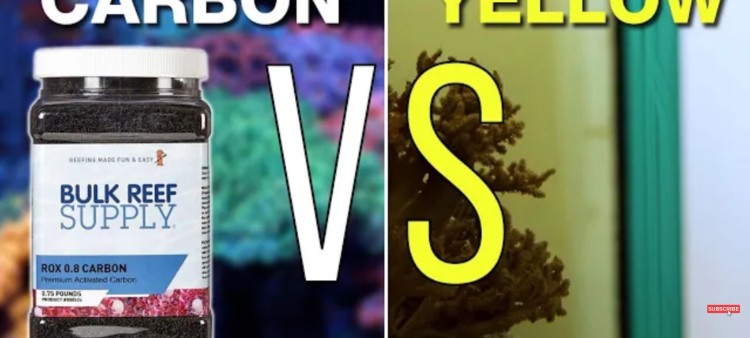Does Yellow Reef Tank Water Really Affect PAR?
- Jan 03, 2022
- Anshika Mishra
- 302 0 0

Will sudden increase in PAR from removing yellow pigments overstress or shocks the corals? Or should we change carbonate more frequently to reduce the advancement and flows of yellowish water?
A quick internet search will provide you with very little if any all reports or experiences of PAR loss due to water pigments. But, even an eight-year-old experiment by Dana Riddle at reefs.com suggested that measuring PAR differences between yellow and clear water does not yield meaningful results.
So, it is time to revisit this test from the past with more appropriate testing approaches with multiple tanks of varying intensity of yellow, repeatable results, and a more up-to-date par meter.
Test 1
The first test was conducted in a controlled environment with 10-gallons of tank water from three dirty tanks. Measuring PAR before and after 24-hours of running carbon.
Result
There were three different shades or tints of yellow between the first, second, and third tank next to a crystal clear chamber of freshly mixed saltwater.
Looking at the first round of PAR measurement prior to running carbon, you will see that each sample is within 5 PAR of each other, including the controlled at 266
- Tank 1: 219
- Tank 2: 269
- Tank 3: 287
After just a few hours of running carbon, visually, you can see the yellow pigment from each tank sample being removed. Once the full 24-hours were up, the PAR measurement was taken, and all the three tanks gained anywhere from 30 to 40 PAR, but still, a pretty far from 500 PAR reduction was noticed in the bucket test years ago.
- Tank 1: 260
- Tank 2: 302
- Tank 3: 326
In comparison, there was only 19%, 12%, and 13% increase in PAR respectively across each tank sample.
Test 2
It took the same approach. However, the PAR measurements would be taken directly in each tank before and after running that 24-hours of carbon. Visually, anybody can notice that the carbon has removed the yellow pigments in each tank.
Result
The PAR was measured roughly in the middle of each tank, about 12-inches under the surface. Surprisingly, there was no more than 5 PAR change in either of the three tanks, which can be summarized as negligible, or no real, meaningful result.
There are a couple of factors that are at play here. First, there average 15% increase in the controlled experiment v/s the actual tanks themselves.
Takeaways
The depth of the PAR testing: The PAR readings in test 1 were taken in about 24-inches of water, while the readings of the actual aquariums were recorded around 12-inches underwater, which is a little more representative of the tanks overall average PAR.
No Drastic PAR Loss: In the actual reef tank, we goal from about 200 PAR
So should we be concerned about the sudden change in PAR after using carbon in a yellow-tinted tank? You could reduce some flow in your medium reactor if you let your tank get extremely pigmented. However, it is not something that most experts lose sleepover.
One glaring thing that we cannot overlook here is that master yellow tainted water and how great the tanks look after running carbon. So, the juice is 100% worth the squeeze, just for that reason alone.
Alternative?
However, not being able to swap out your carbon routinely must lead you to seek alternative options like ozone. Sure, there is a part of running ozone that might tickle many reefer's inner gear junky, but it can be the new water clearing standard.
What do you think?






About author